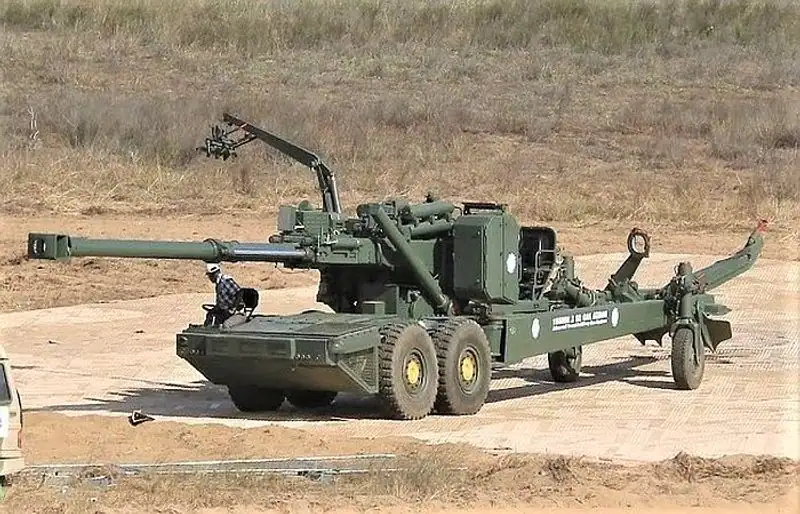SOURCE: AFI


India has solidified its position as Armenia’s leading arms supplier, accounting for 43% of the country’s total weapons and ammunition imports between 2022 and 2024, according to a recent report by the Stockholm International Peace Research Institute (SIPRI). This marks a dramatic shift from 2016–2018, when India’s contribution to Armenia’s arms imports was nearly zero. With contracts totaling USD 600 million, India has surpassed Russia, Armenia’s traditional supplier, highlighting New Delhi’s growing influence in the South Caucasus and its strategic push to capture markets vacated by Moscow amid the Ukraine conflict.
Armenia’s reliance on India for 43% of its arms imports reflects a deliberate diversification strategy, driven by dissatisfaction with Russia’s reliability as a supplier. Between 2020 and 2024, Russia’s global arms exports plummeted by 64%, with deliveries to Armenia hampered by Moscow’s focus on its war in Ukraine and trade sanctions limiting production capacity. Armenian Prime Minister Nikol Pashinyan has publicly criticized Russia for failing to honor arms contracts signed in recent years, prompting Yerevan to seek alternatives.
India has capitalized on this opportunity, offering a range of cost-effective, indigenously developed weapons systems. Key deals include the supply of 15 Akash-1S air defense missile systems, valued at USD 720 million, with deliveries expected in late 2024, making Armenia the first foreign buyer of this platform. The Akash-1S, manufactured by Bharat Dynamics Limited, provides robust protection against fighters, guided missiles, and drones, enhancing Armenia’s air defense capabilities amid tensions with Azerbaijan. Additionally, Armenia has procured Pinaka multi-barrel rocket launchers, advanced towed artillery gun systems (ATAGS), anti-tank rockets, mobile radar systems, and anti-drone equipment, with the total value of purchases reaching USD 600 million by the start of fiscal year 2024–25.
The burgeoning defense relationship is underpinned by strengthened diplomatic and military ties. In 2023, Armenia appointed a defense attaché to its embassy in New Delhi, a first in bilateral relations, reciprocated by India’s appointment of a military attaché to Yerevan in 2024. These moves signal a commitment to long-term cooperation, with India eyeing Armenia as a strategic partner in the South Caucasus, a region historically dominated by Russia and Turkey.
India’s defense exports to Armenia are part of a broader strategy to challenge Russia’s declining influence in traditional markets. The SIPRI report notes that India is leveraging low-cost, long-term loans through the Export-Import Bank (EXIM Bank) to attract countries with limited financial capacity, outmaneuvering competitors like France, Turkey, and China, which also offer financing for arms purchases. In January 2025, India opened an EXIM Bank branch in Brazil to support similar initiatives, and negotiations are underway to sell Akash missiles to Brazil, indicating the scalability of this approach.
Armenia’s pivot to India is driven by both necessity and geopolitics. The Second Karabakh War in 2020 exposed Armenia’s military vulnerabilities, particularly in air defense and precision strike capabilities, as Azerbaijan, backed by Turkey and Pakistan, reclaimed disputed territories. India’s arms supplies, intensified post-2020, are seen as a counterbalance to the Azerbaijani-Pakistani-Turkish axis, aligning with New Delhi’s strategic interests in countering Pakistan’s influence and expanding its geopolitical footprint.
However, this shift has raised concerns in Azerbaijan, where officials view Armenia’s arms acquisitions as a potential threat to the fragile peace in the South Caucasus. Baku has expressed unease over India’s supply of offensive systems like the Pinaka rocket launchers, which could escalate tensions over Nagorno-Karabakh. India’s growing defense ties with Armenia may also strain relations with Turkey, a key NATO member and Azerbaijan’s ally, complicating New Delhi’s balancing act in the region.
India’s emergence as Armenia’s top arms supplier reflects its broader ambition to become a global defense exporter. The country’s defense production reached a record INR 1.27 trillion (USD 15 billion) in 2023–24, a 62% increase since 2020, driven by initiatives like the Positive Indigenisation Lists and the Defence Acquisition Procedure (DAP) 2020, which prioritize domestic manufacturing. In 2023–24, India’s defense exports surged to INR 23,622 crore (USD 2.8 billion), with Armenia, the United States, and France among the top destinations.
The SIPRI report underscores India’s strategic use of affordable financing to penetrate markets traditionally dominated by Russia. By offering loans at favorable interest rates and extended repayment terms, India is attracting countries like Armenia, which face political instability or low credit ratings. This approach, coupled with India’s negotiation of a free trade agreement with the Eurasian Economic Union (EAEU), where Armenia is a member, positions New Delhi to deepen defense and economic ties in the region.
NOTE: AFI is a proud outsourced content creator partner of IDRW.ORG. All content created by AFI is the sole property of AFI and is protected by copyright. AFI takes copyright infringement seriously and will pursue all legal options available to protect its content.